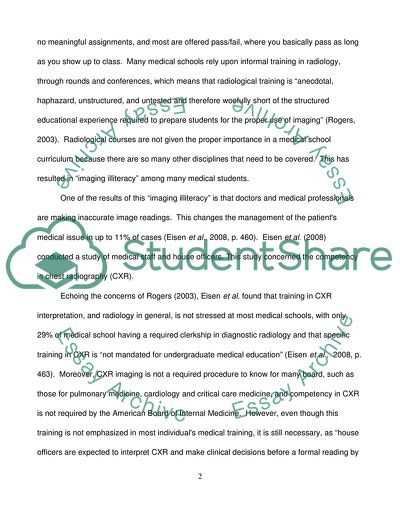Cite this document
(The Importance of Medical Training Literature review Example | Topics and Well Written Essays - 1250 words - 1, n.d.)
The Importance of Medical Training Literature review Example | Topics and Well Written Essays - 1250 words - 1. https://studentshare.org/education/1742845-evaluation-of-the-educational-needs-of-3rd-and-4th-year-medical-imaging-students-for-fostering-specialized-radiographers
The Importance of Medical Training Literature review Example | Topics and Well Written Essays - 1250 words - 1. https://studentshare.org/education/1742845-evaluation-of-the-educational-needs-of-3rd-and-4th-year-medical-imaging-students-for-fostering-specialized-radiographers
(The Importance of Medical Training Literature Review Example | Topics and Well Written Essays - 1250 Words - 1)
The Importance of Medical Training Literature Review Example | Topics and Well Written Essays - 1250 Words - 1. https://studentshare.org/education/1742845-evaluation-of-the-educational-needs-of-3rd-and-4th-year-medical-imaging-students-for-fostering-specialized-radiographers.
The Importance of Medical Training Literature Review Example | Topics and Well Written Essays - 1250 Words - 1. https://studentshare.org/education/1742845-evaluation-of-the-educational-needs-of-3rd-and-4th-year-medical-imaging-students-for-fostering-specialized-radiographers.
“The Importance of Medical Training Literature Review Example | Topics and Well Written Essays - 1250 Words - 1”. https://studentshare.org/education/1742845-evaluation-of-the-educational-needs-of-3rd-and-4th-year-medical-imaging-students-for-fostering-specialized-radiographers.


